I want to be an astronaut. I want to be a baseball player. These are things that I said to myself time and time again as a child. I remember humming “star light, star bright,” as I looked out the window to the blackened sky that seemed to have little holes in it where light peaked through. In my mind, that nursery rhyme would make all my dreams come true. I would live out my life doing what I love.
Then one day, I saw a drawing on a table. It was of a bridge with intricate details that spoke of someone who had real talent. Enough talent to do this for a living. That someone was my mother. I quickly asked her where she learned how to draw and she replied, “Oh, I just doodle.” I was not satisfied with that response, I knew in my heart that she sacrificed her dreams to create mine. She was the answer to my nursery rhymes. My dreams were now her dreams and hers were put on a shelf where dust has collected.
Many years later, I walked into a restaurant where I met a waiter, whose real purpose was found when his pencil hit paper. He was a man who was passionate about art, the creative process, and working tirelessly on his craft to break him free of the confines of life and circumstances. In his eyes, I saw a life being pursued. A life he was not merely accepting, but creating.
Days passed, I noticed a drawing at a coffee shop. It was intricate and beautiful, silently screaming with talent. Enough talent to do this for a living. I asked around about the artist behind the drawing and they replied, “James McClung.” Come to find out James was the waiter that I had met days earlier at the restaurant. Dreams were coming to fruition.
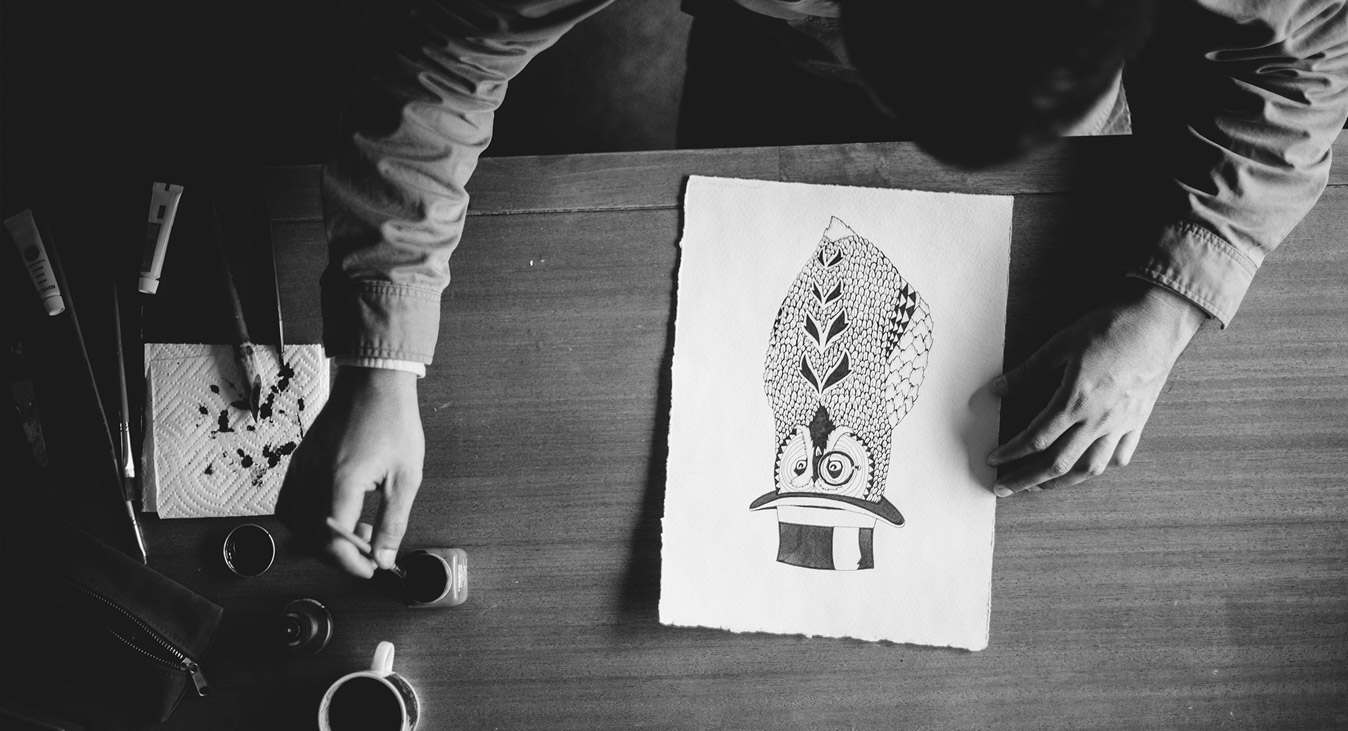
Years progressed, James slowly rides up on his bicycle—messenger bag across his chest with his talent in stow. With a lightness in his step and a sense of humble pride written on his face, he walks towards the coffee shop knowing that waiting tables was now his history and that art was his today and many tomorrows.
That day we sat over coffee and I learned more about the road James traveled to get to this point, and how something as simple as drawing as a child turned into so much more, taking him to places never imagined.
This is his story—an artist’s story.
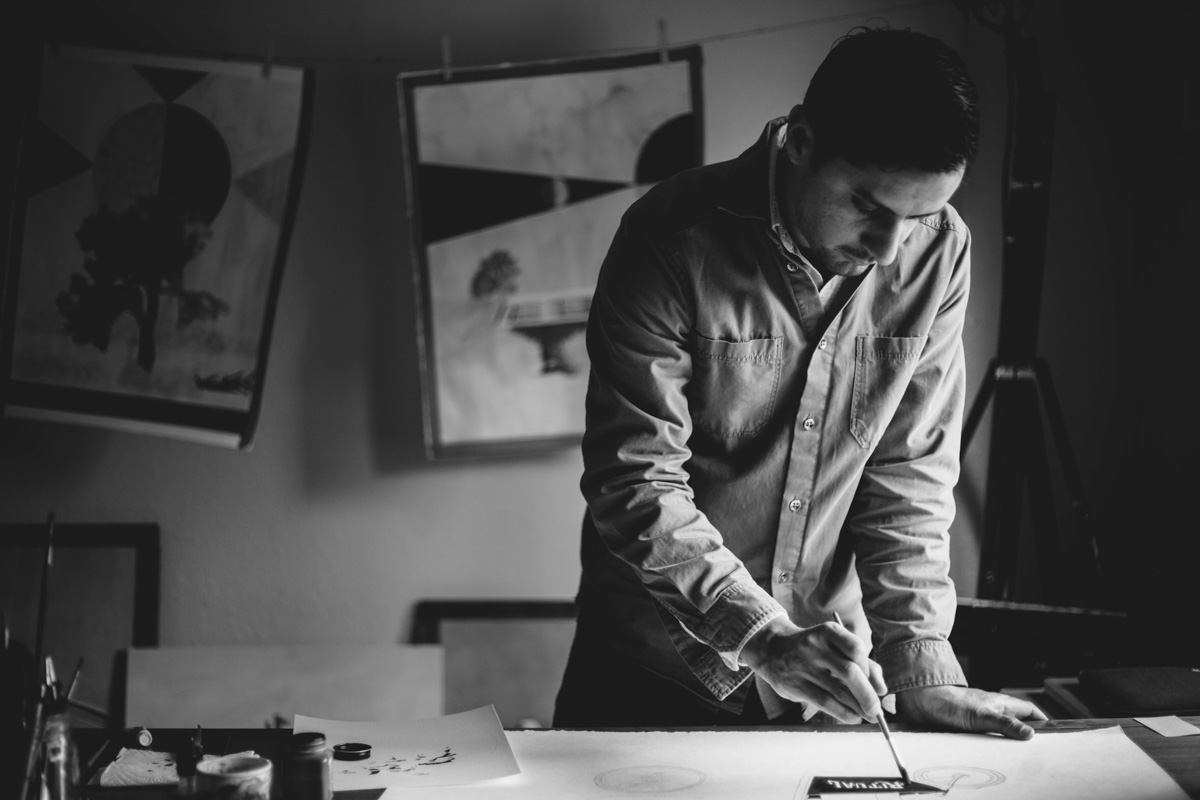
Tell me a little about yourself?
I was born in San Dimas, CA. I believe at the age of five we moved to Fontana, CA, where I grew up until I was twelve years old. Then a little after my twelfth birthday, we relocated to Redlands, CA, where I started junior high and attended high school.
When did art come into play in all of this?
As far as I can remember I was five years old. I would sit down and it was just one of the things I did. I remember drawing Disney characters. I had it in my mind at the time that I wanted to be a roller coaster designer. I had these big sheets of paper that I would draw these huge roller coasters on. I would even write out the names of them and design the little cars to go with it. I loved it!
I also think my high school years contributed to my passion for art. At that time I wasn’t really doing well in school. I had a hard time in large classroom environments which led me to drift away from academics. I found myself not getting things done and I started to fall behind. I ended up in a continuation school. I saw this as a positive experience and very helpful because of the smaller classroom size. It was there that I had an art teacher that helped me direct my focus. She was able to see what I was passionate and motivated about and encouraged me to pursue what I love: art.
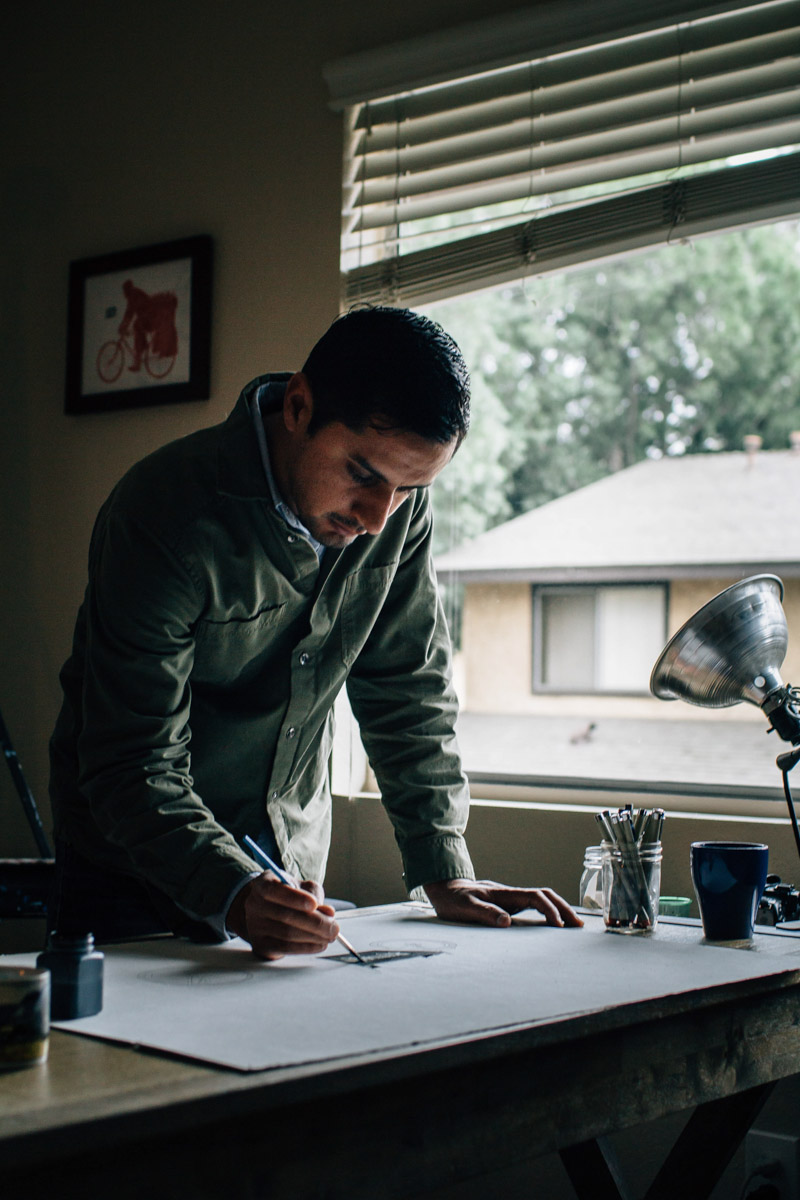 |
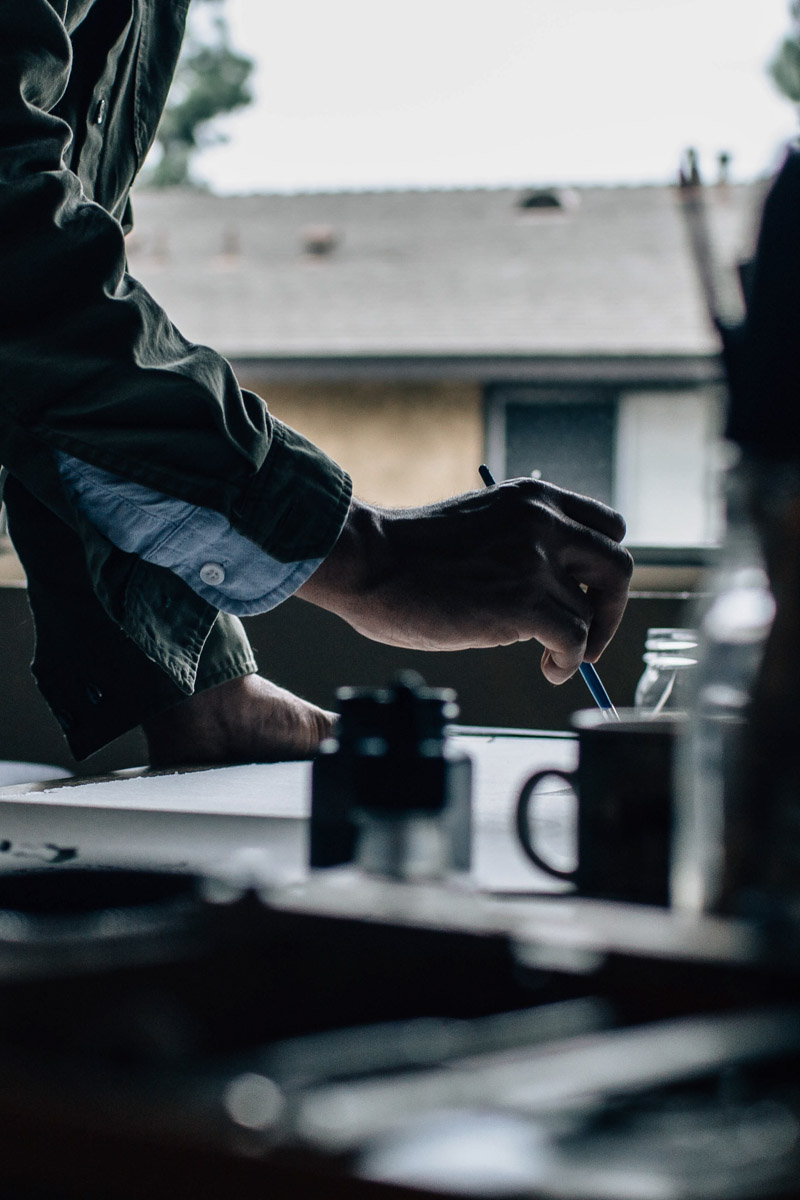 |
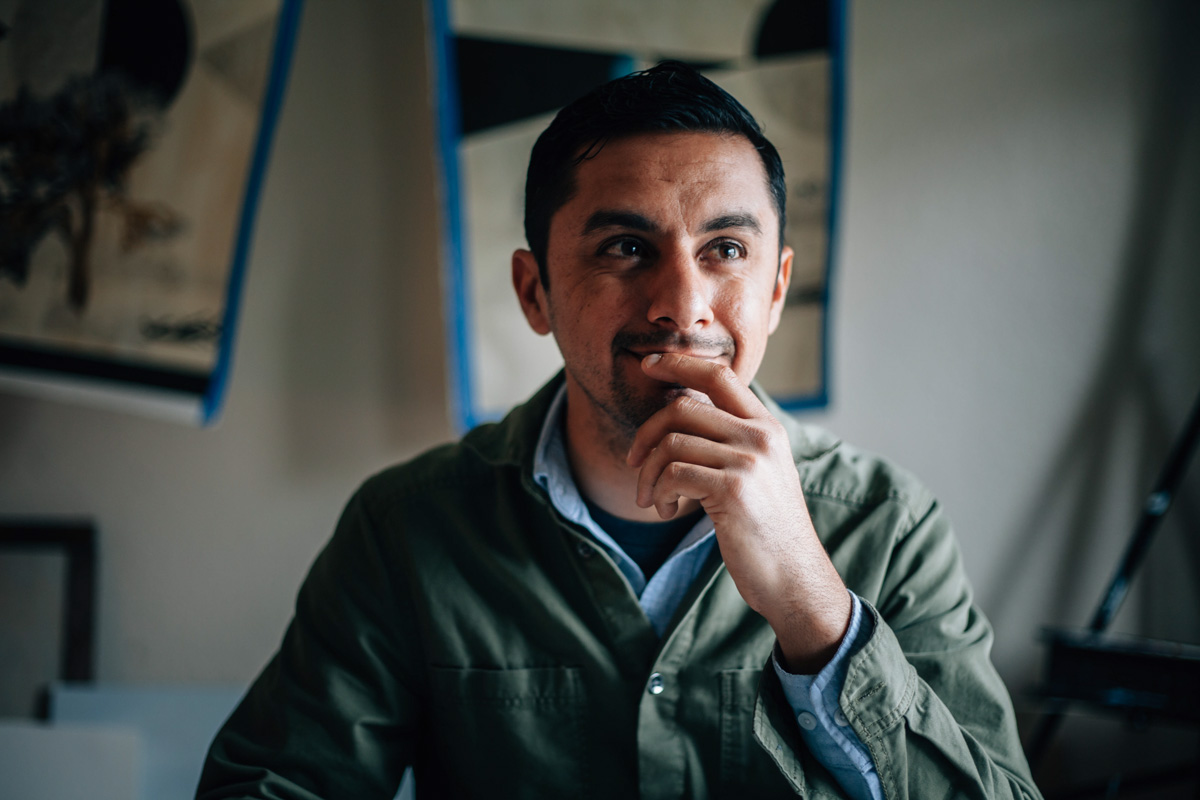
Were there any other experiences/influences that led you to art?
I was also very into skateboarding. To me those two things (art and skateboarding) go hand in hand as far as being creative and creativity as a whole. There were times I would skateboard until I couldn’t anymore because I was so tired. Then I would go home and draw for hours.
My mom got me a paint set—oil paints—and that’s what really got me going too. Oil paints seemed a little more professional—serious stuff that one doesn’t just splatter around, because you don’t want to waste it. This led to one of my first paintings. It was of a couple of hills and a sunset, just fooling around with the shading. I gave it to my mom as a present and she loved it. I was still in high school at the time. I taught myself how to use the oil paints because one of the first art classes I took in high school used watercolors and acrylics. It was through experience that I ended up making up my own techniques for painting.
Basically you are a self-taught artist. Did you get some instruction along the way?
Yeah, I went to Crafton Hills College and I had a professor up there that gave me a lot of direction. Also, my high school teacher at Orangewood gave me direction as well. Over the years, looking back, there was a lot of time spent in a garage or in my bedroom where I experimented over and over with different mediums. So, yeah a lot of it is self taught, trying new things out.
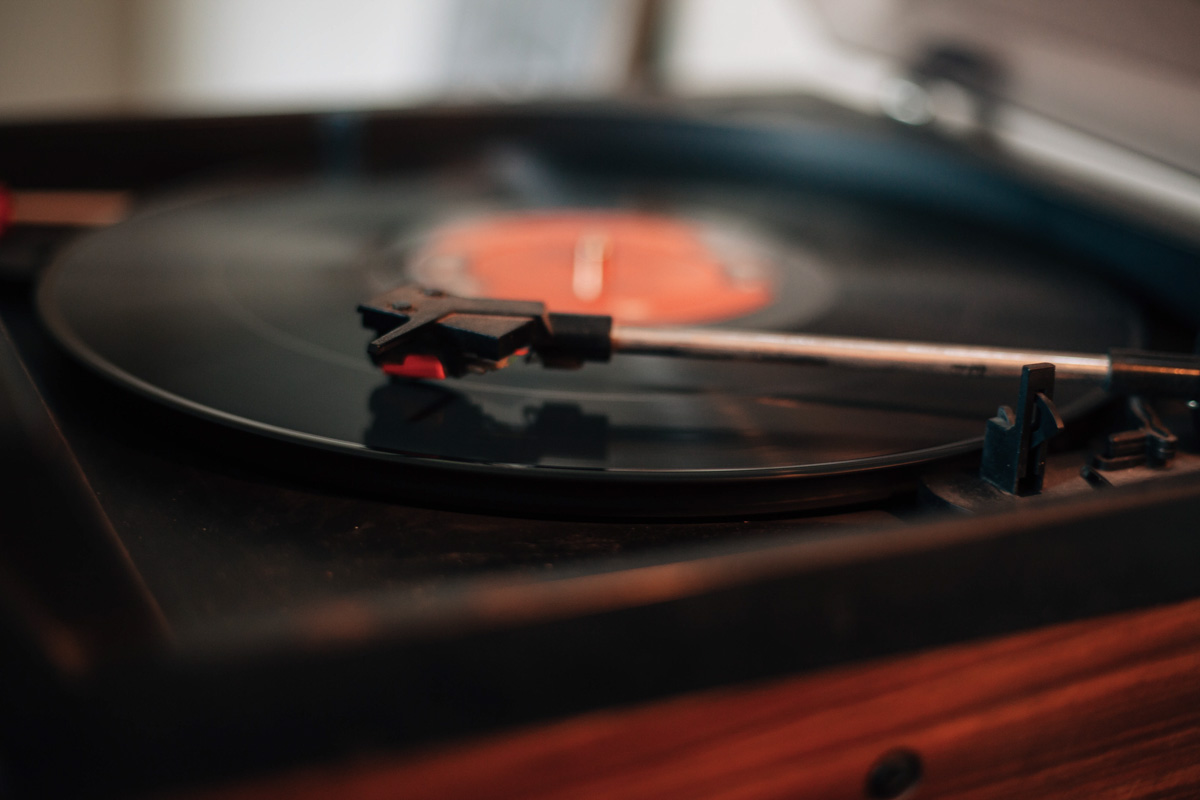
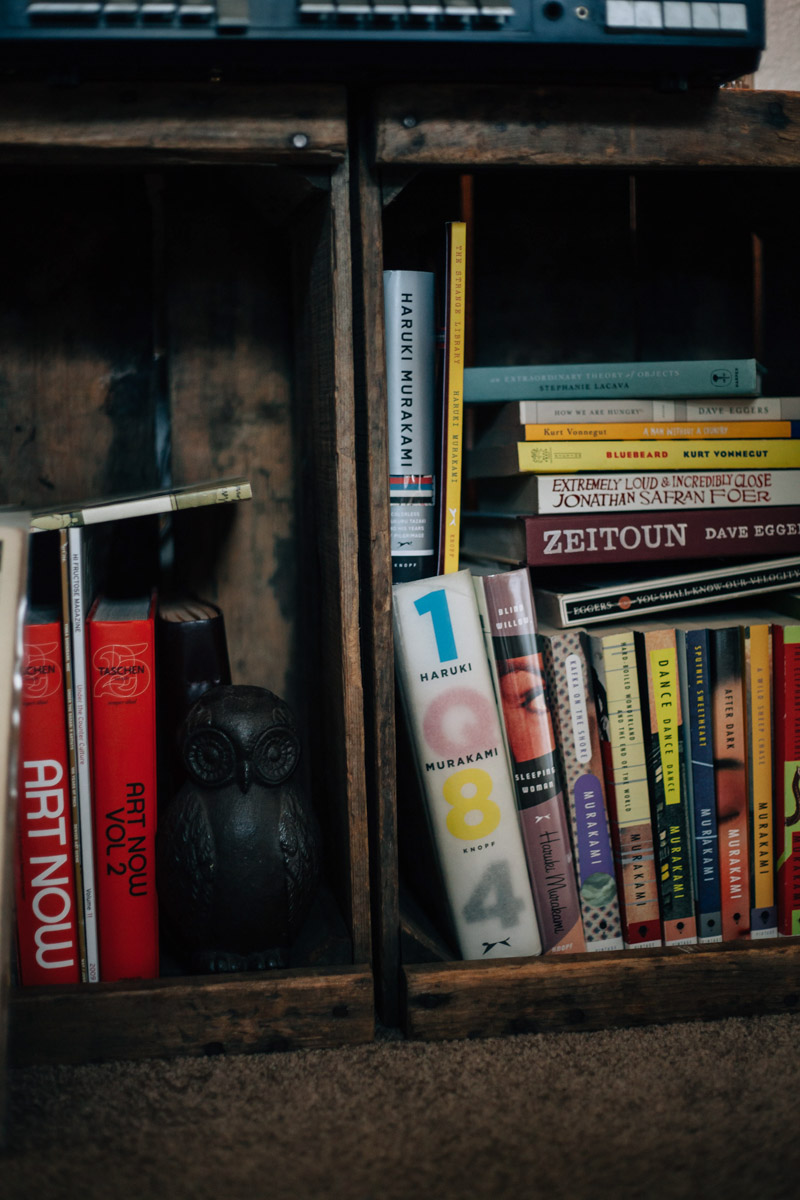 |
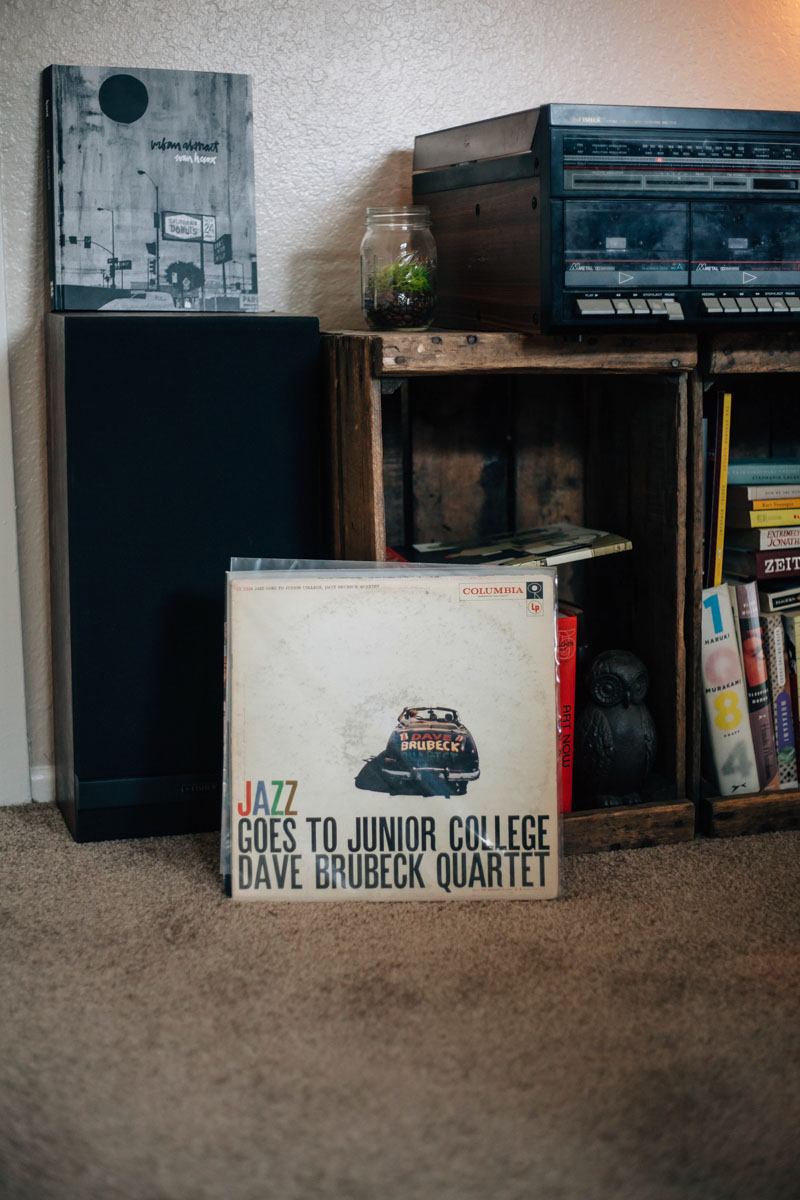 |
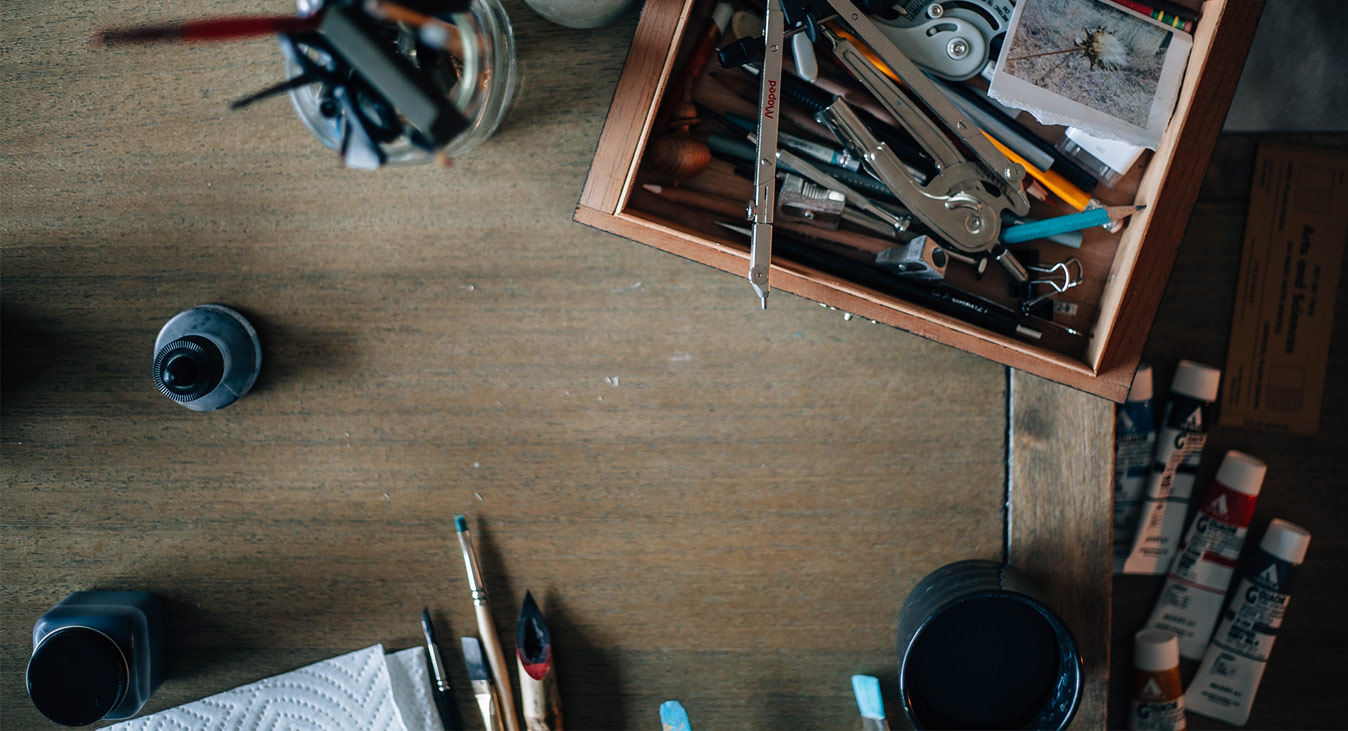
When did you know you wanted to be a professional artist?
The idea of becoming an artist professionally started to take shape after I had heard a message that said, “Be what you are.” That message made me question myself.
“Who am I?”
I reminisced about my childhood and looked at what I loved to do. It was art. In my mind I knew I couldn’t skateboard for my whole life. I wasn’t that good. I just figured out that I love art, drawing and painting. So I started to put a lot more focus on that and from there I just started to create all these paintings. I was trying to figure out what I should do with all this stuff that was now laying around. So I got into the mindset that I wanted to start showing it. But how do I do that. Nobody knows me. So I went back to my old high school, talked to my art teacher just to say hello. This was about two years after I graduated. I told her I have something to show you. It was a trunk full of paintings. Amazed and brought to tears, she was filled with joy that I kept pursuing my art.
I proposed the idea of an art show at my old high school. For some reason, I figured that if I wanted to pursue art—sell paintings and do that whole thing—I needed to find a place to start. The best place I could think of was where my passion was first cultivated and encouraged. I was 21 at the time.
I told my teacher that I cared about this school. It really gave me a lot; I got scholarships from this school for college. So I took all those paintings and we did a show. We ended up selling a lot of them and I suggested that we make the proceeds into a scholarship fund for the students. I wanted them to feel the joy and happiness that art brought me. The feeling of accomplishment that I had felt when someone bought a painting that I created is something I want for them to experience too.
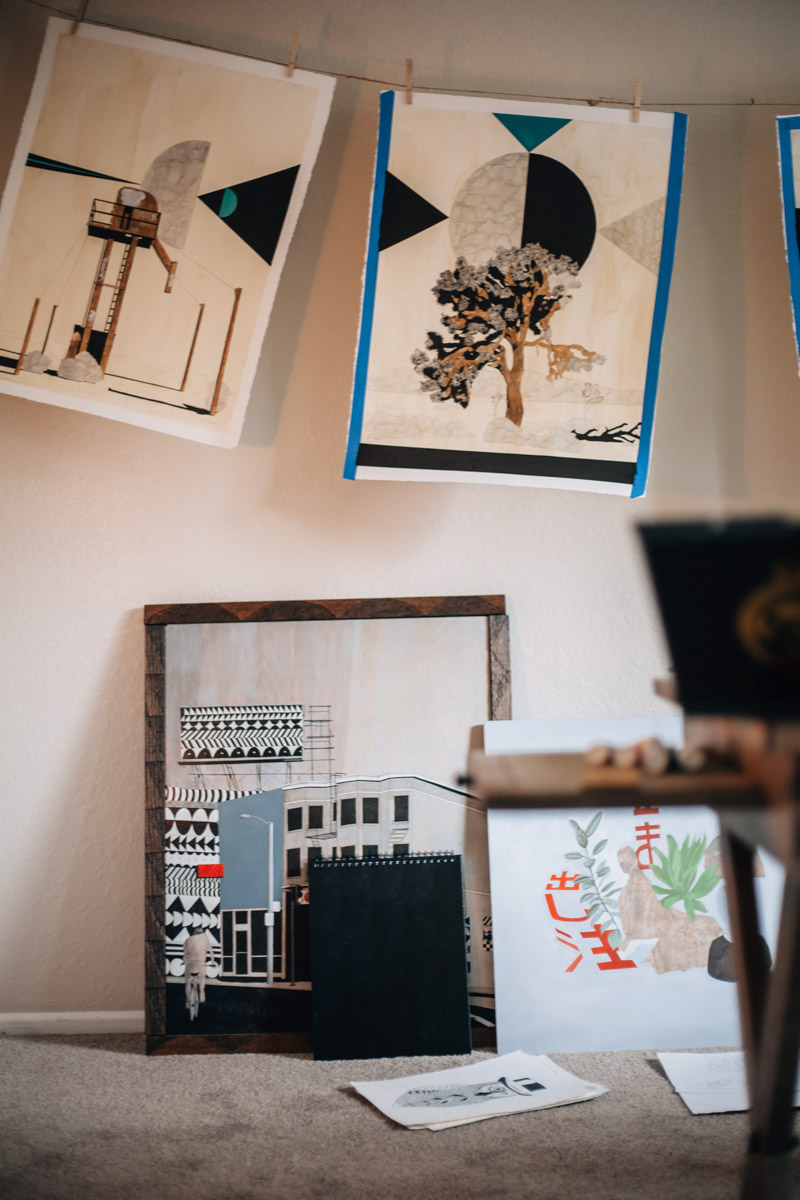 |
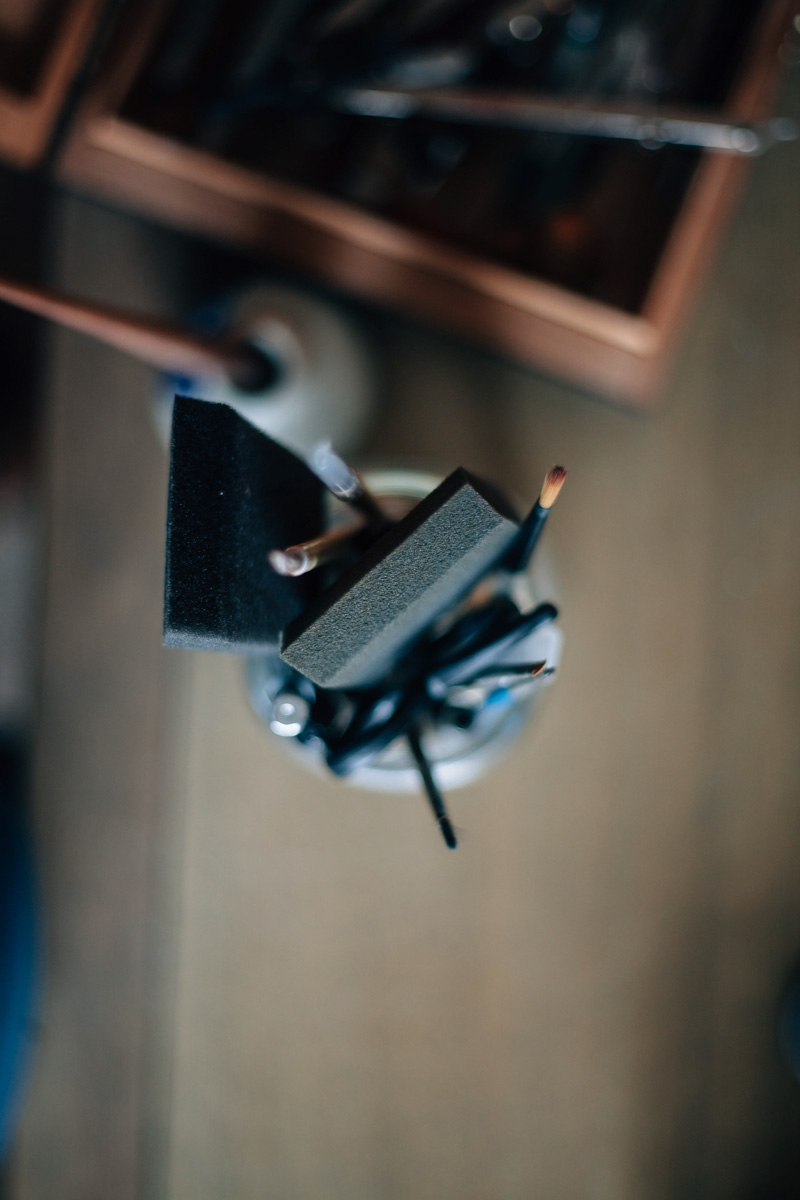 |
When did you make the transition into creating art and design for the culinary industry?
It didn’t happen right away in the culinary world. I met a guy named Chris Nunez who owns FUN (Friends United Network). He approached me and asked me to draw some pictures for t-shirt designs. I really didn’t know what I was getting into at the time, so he commissioned me to draw a pug.
Augie’s Coffee Roasters out of Redlands, CA, noticed the pug design and said, “We have an idea for a product. Would you be able to make it for us?” That’s where it really started. This was around 2010. I was twenty-seven at the time.
The idea was inspired by the La Marzocco lion holding a shield. They wanted to create something similar but with another animal holding the Augie’s logo instead. For the final design, we were able to create the logo they wanted with the California bear. This was my first commission in the culinary world. It made me realize that I could look at something as inspiration and transfer it onto something else like a product and create a similar feel.
What was the reception like after you finished it?
It was great. Augies made sweaters and mugs and people took to it really well. I was just blown away. I mean it was a pretty simple drawing if you look at it. It may have taken an hour or so. To actually draw it in, fill it in, and put it into Illustrator. I was like, “Wow! Something so simple and now it has blown up to into so many different things.”
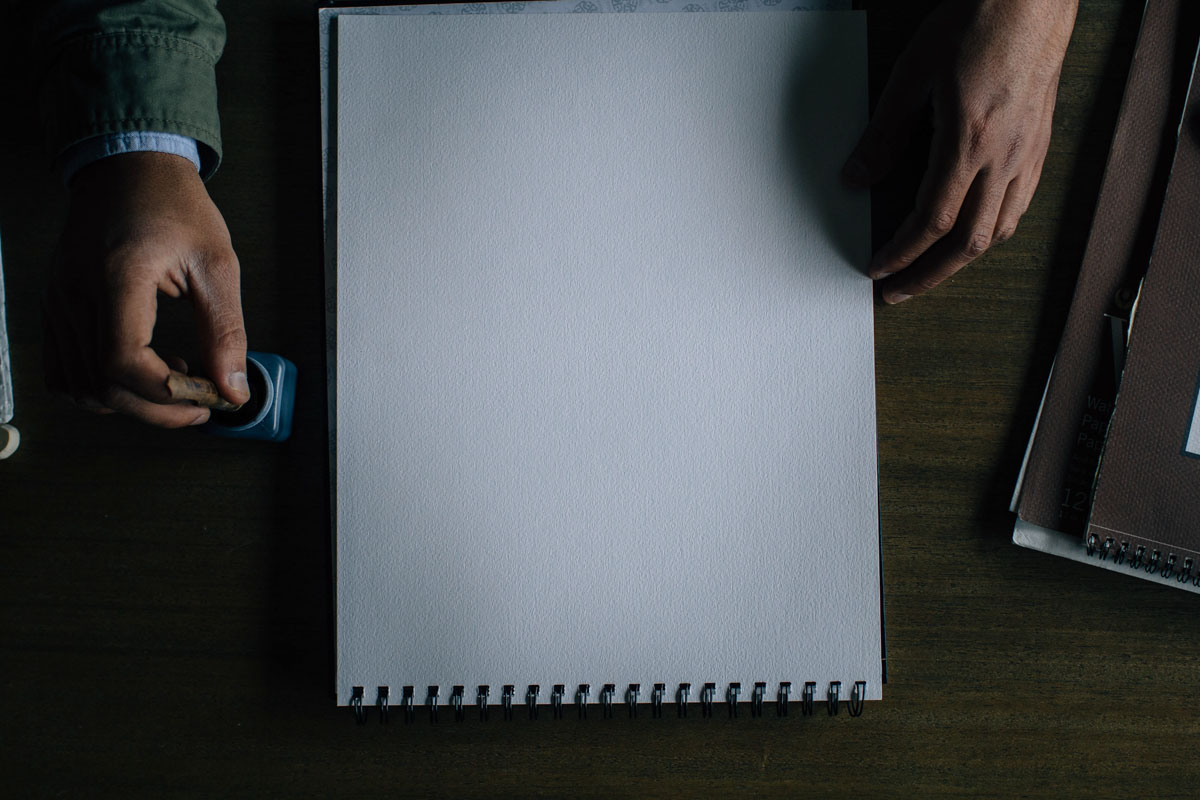
Where did you go from there?
I continued to do more illustrations for Augie’s but people started to take notice. Ryan Berk, owner of a à la minute, saw that collaboration and something that caught his eye. He got a hold of me about an idea he had about a new chocolate shop he wanted to open. He was fascinated with the idea of owls and asked if I could illustrate them for him. So that’s where Parliament Chocolate came to be. Again, I kind of didn’t know what I was getting into at that point.
Ryan expressed to me the idea behind the chocolate bean and how we wanted to make it into bars and other confections. The difference was it was not going to be one style of chocolate beans, it would be multiple beans just like coffee. He was going to have Bolivia, Guatemala and all different sources coming in. That really stood out to me. With that knowledge, I decided, if we are going to make a logo, the name is one thing, but as far as imagery, instead of one owl, I wanted to create multiple owls to represent the origin of each bean. From there, I had to figure how do I make this brand one that people could recognize as Parliament Chocolate.
I knew I had to make an image that was very noticeable and that showed continuity. My inspiration actually came from my childhood via the Rice Krispies brand, you know the three little guys—snap, crackle and pop? I thought that was cool. When I was a kid they were like three individual characters that helped establish their brand in different ways. That influenced the idea and helped shape how I was going to use the owls. I went back and figured you can’t make a bunch of illustrations because it had to be noticeable. So I asked myself, “What is Parliament? It’s a chocolate company. What is the one image that I could use that would show continuity in the brand?” So it came down to the cocoa pod—getting down to the basics of what chocolate is. Each owl’s body shape is the shape of a cocoa pod. I figured I could use that shape as a template for each owl. This template enabled me to flip it around either left or right and it is still the same shape. That’s how that came about. Now, we have four different owls.
I went through so many drawings at first before settling on this idea. I was so nervous. This was a serious company and I was trying to figure out how to make a “cool” looking owl. I just wanted to knock it out of the park.
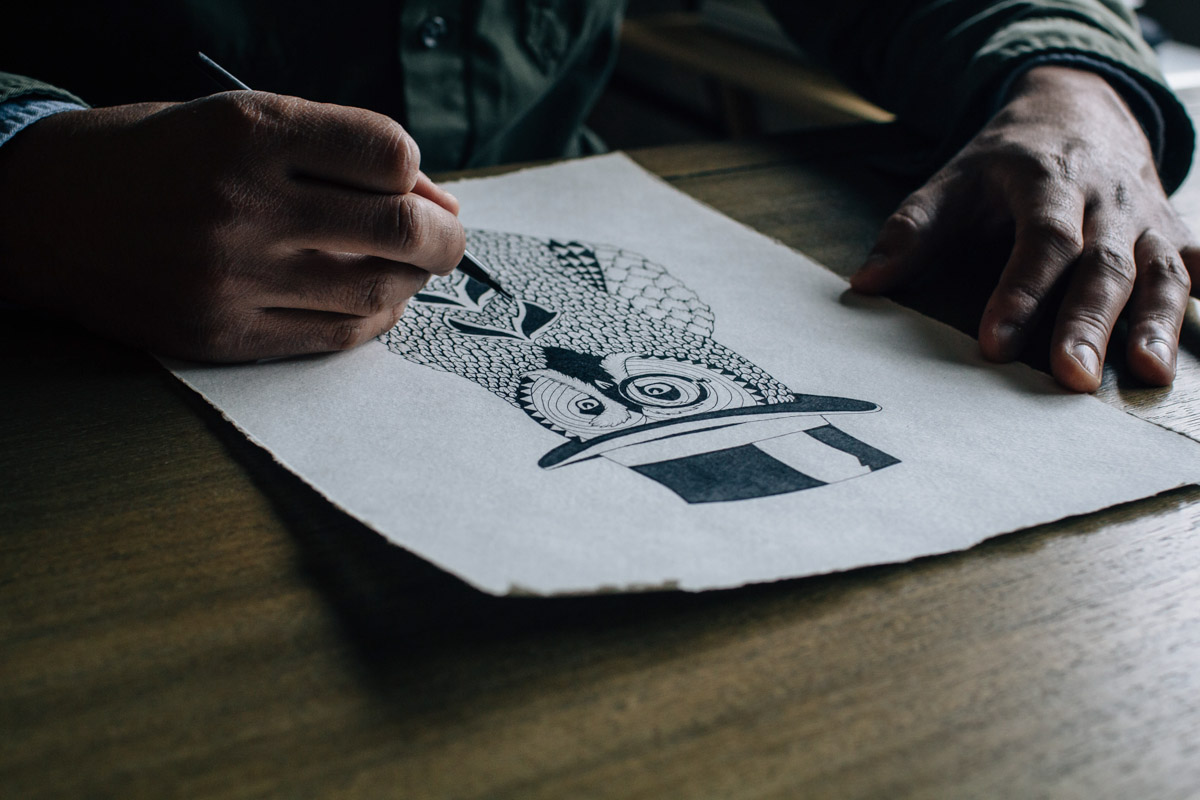
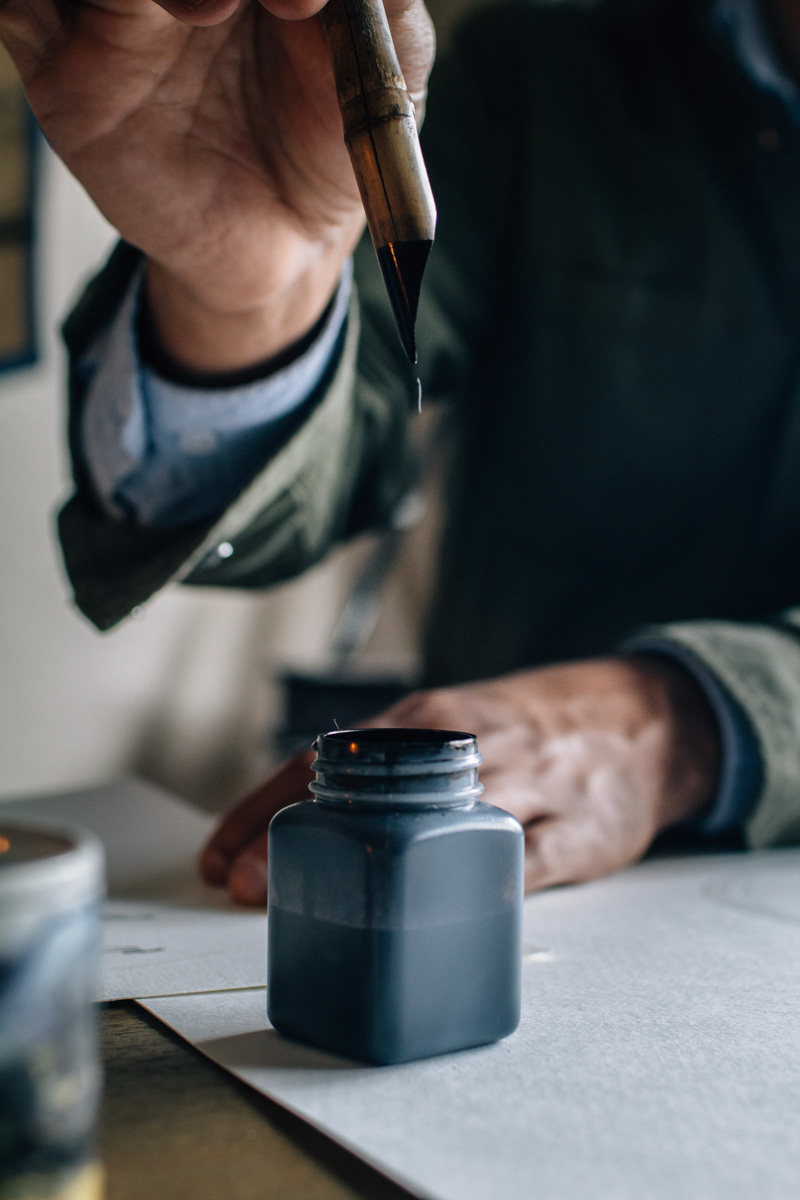 |
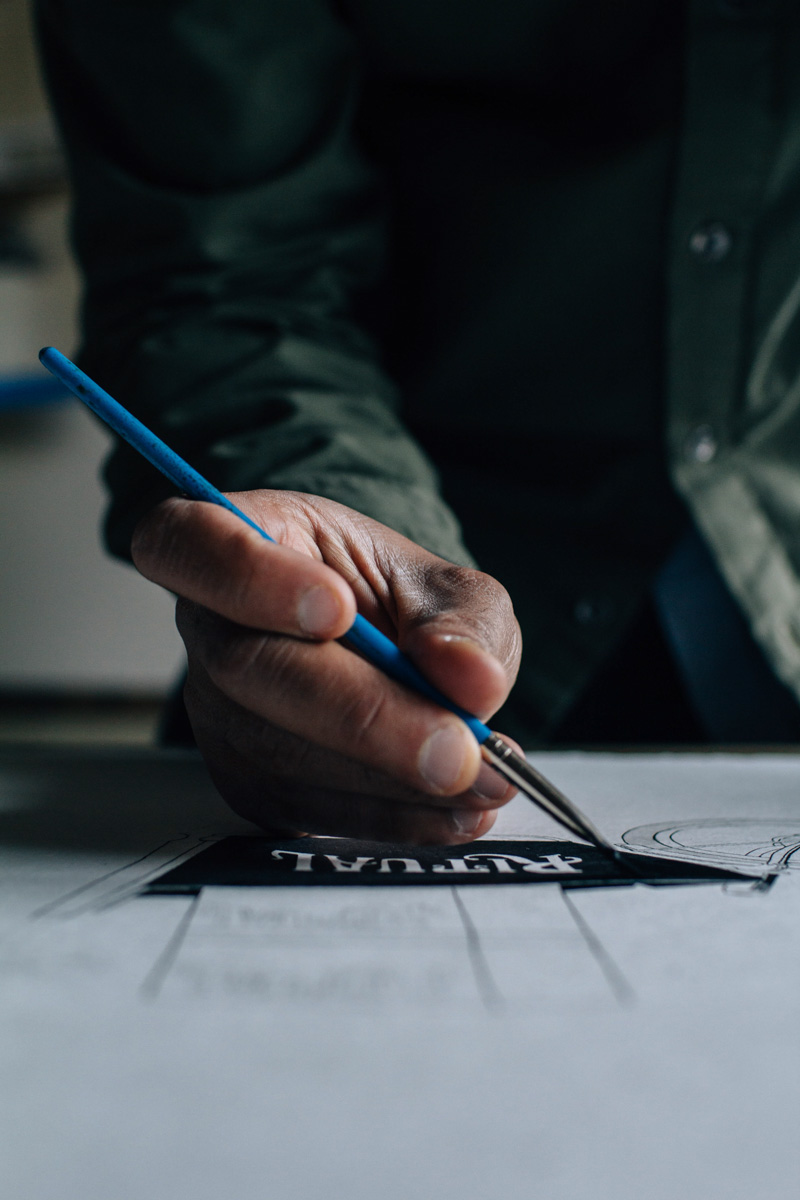 |
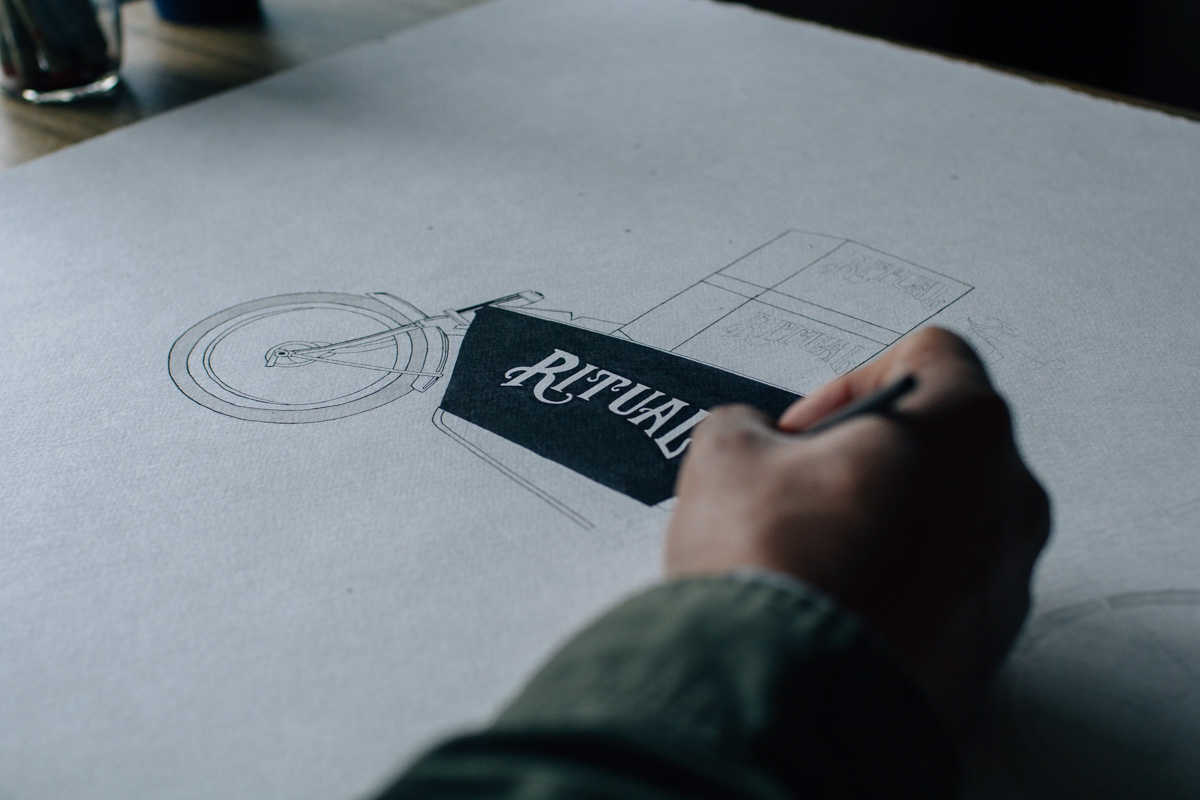
Your work with Parliament led to more opportunities to create in the culinary world. Can you name which companies you have created projects for?
From the Parliament jobs, I have had the opportunity to work with other companies such as Wolfskill, The Salted Pig, Time in a Bottle, The State, Olive Avenue Market and, most recently, Ritual Brewery.
Your art is helping build a brand in the culinary world. You entered into the culinary world in a different way than most. How does it make you feel, in that you are not only an artist, but a culinary artist?
Sometimes it feels a little overwhelming but it is actually is kind of unbelievable. Going from drawing or doodling as a kid to creating art for a living now is a dream.
My goal is to make an image that people will resonate with and love. I want them to experience an appreciation not only for the brand and the art but for the artist behind the image. My thing is, I want people to enjoy art. I want them to experience what I have experienced—the enjoyment of it. I feel very happy and blessed that I am able to put something out there and people are able to have an interaction with it. When they look at it they have an experience. It may be small and very fast but there is a connection between their mind and eyes and that image. And I did that. And I am I very happy to know that experience happens multiple times a day with people I don’t even know who I may never meet. That image has the power to connect people and open up dialogue, conversation and experiences that they may have never occurred, had they not come into contact with it. Which in turn could lead to limitless possibilities and opportunities like it has done for me. It is still crazy to me the effect a simple drawing on a piece of paper can have and what it can turn into. I know stuff like this can make a difference in people’s lives.
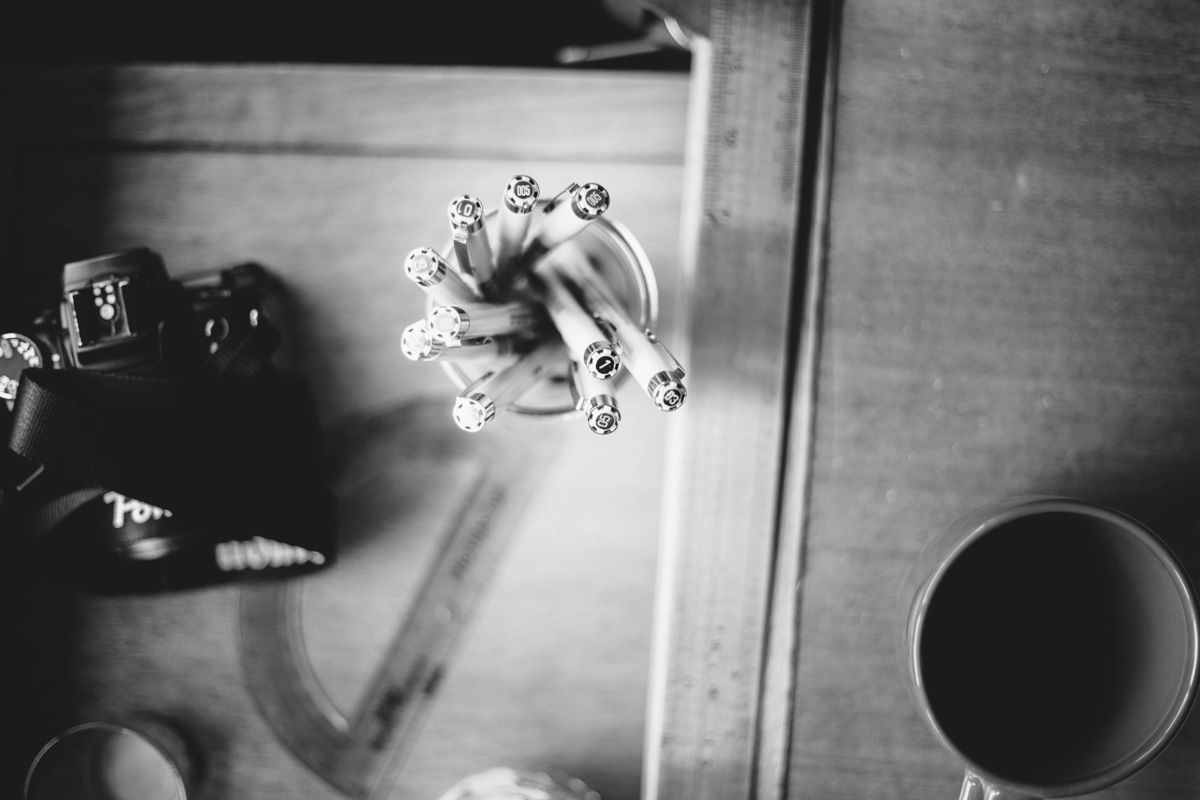
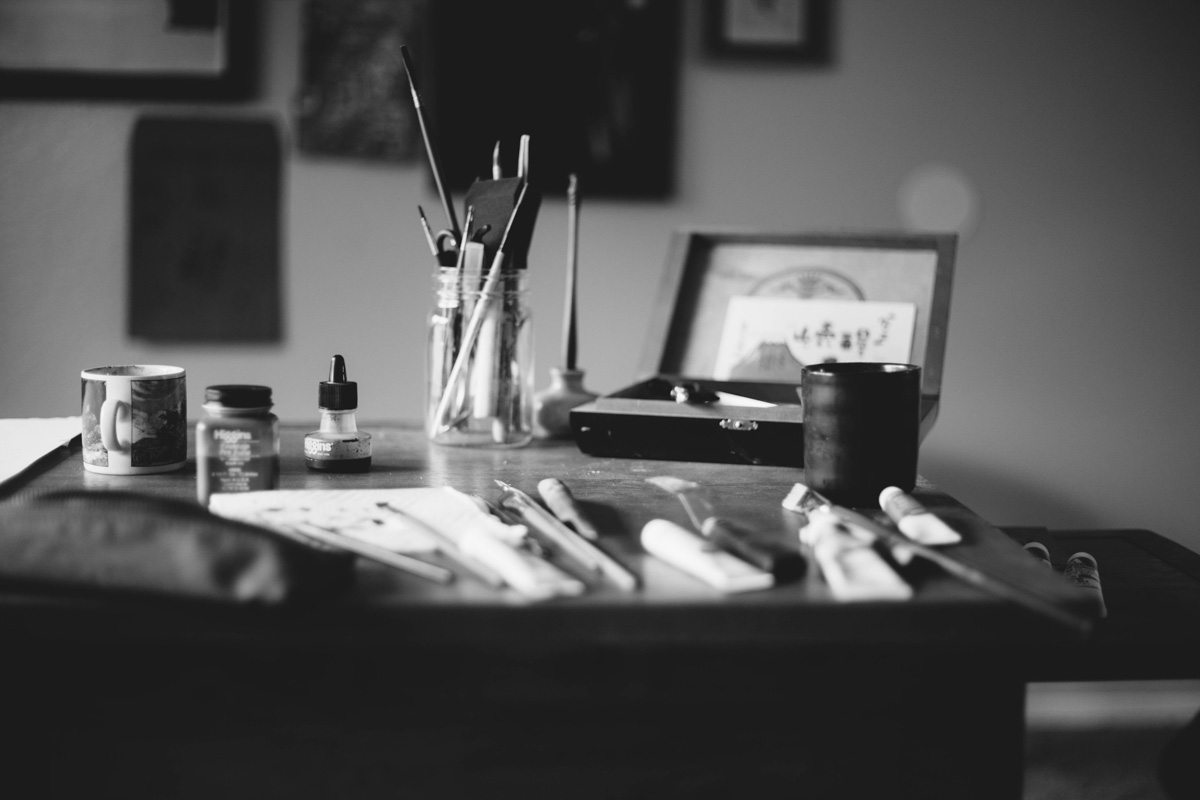
—
View more of James McClung’s work on his website





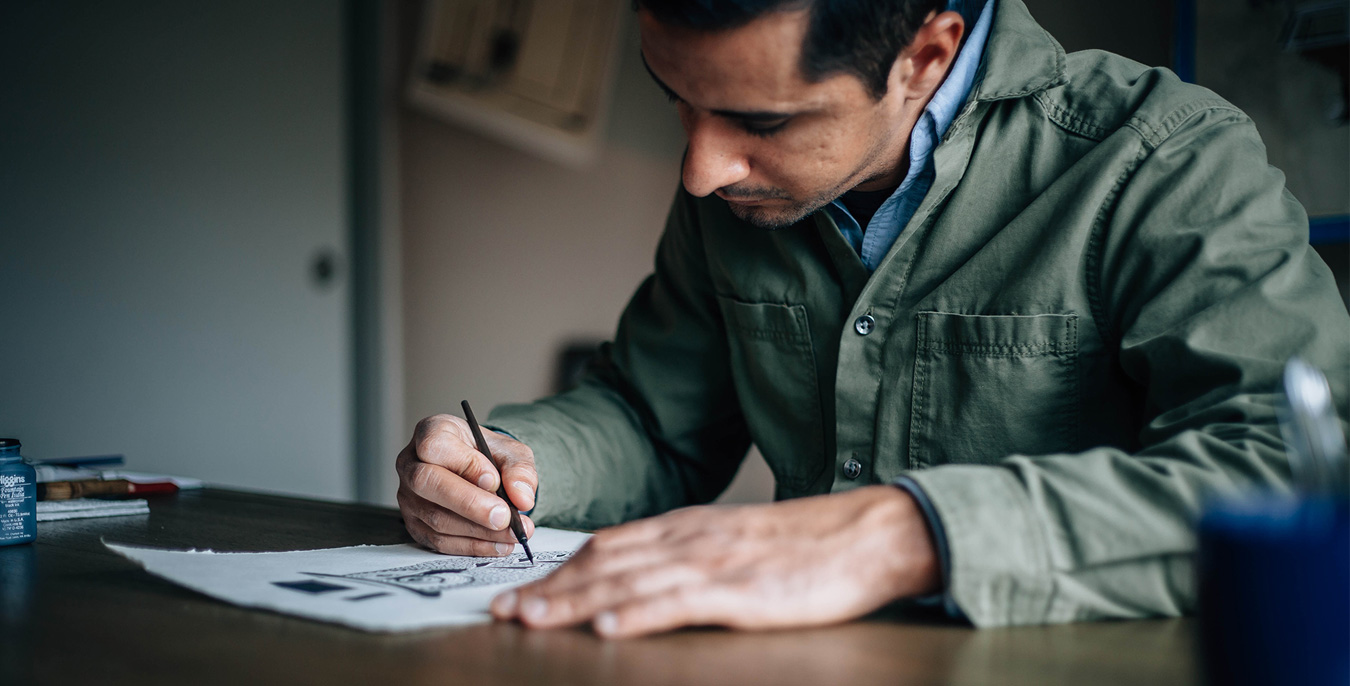

Our comments section is for members only.
Join today to gain exclusive access.